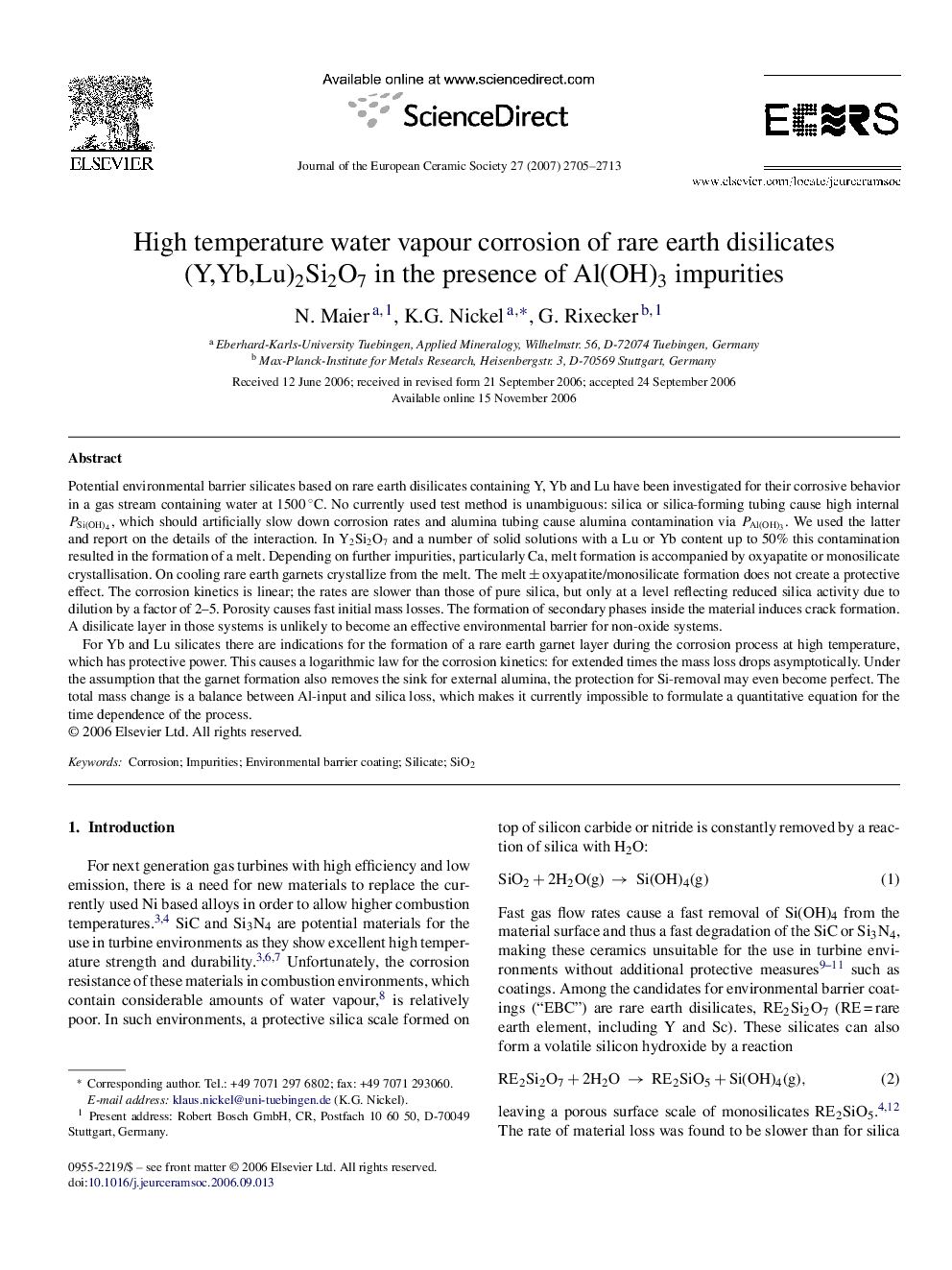| کد مقاله | کد نشریه | سال انتشار | مقاله انگلیسی | نسخه تمام متن |
|---|---|---|---|---|
| 1478467 | 991219 | 2007 | 9 صفحه PDF | دانلود رایگان |

Potential environmental barrier silicates based on rare earth disilicates containing Y, Yb and Lu have been investigated for their corrosive behavior in a gas stream containing water at 1500 °C. No currently used test method is unambiguous: silica or silica-forming tubing cause high internal PSi(OH)4PSi(OH)4, which should artificially slow down corrosion rates and alumina tubing cause alumina contamination via PAl(OH)3PAl(OH)3. We used the latter and report on the details of the interaction. In Y2Si2O7 and a number of solid solutions with a Lu or Yb content up to 50% this contamination resulted in the formation of a melt. Depending on further impurities, particularly Ca, melt formation is accompanied by oxyapatite or monosilicate crystallisation. On cooling rare earth garnets crystallize from the melt. The melt ± oxyapatite/monosilicate formation does not create a protective effect. The corrosion kinetics is linear; the rates are slower than those of pure silica, but only at a level reflecting reduced silica activity due to dilution by a factor of 2–5. Porosity causes fast initial mass losses. The formation of secondary phases inside the material induces crack formation. A disilicate layer in those systems is unlikely to become an effective environmental barrier for non-oxide systems.For Yb and Lu silicates there are indications for the formation of a rare earth garnet layer during the corrosion process at high temperature, which has protective power. This causes a logarithmic law for the corrosion kinetics: for extended times the mass loss drops asymptotically. Under the assumption that the garnet formation also removes the sink for external alumina, the protection for Si-removal may even become perfect. The total mass change is a balance between Al-input and silica loss, which makes it currently impossible to formulate a quantitative equation for the time dependence of the process.
Journal: Journal of the European Ceramic Society - Volume 27, Issue 7, 2007, Pages 2705–2713